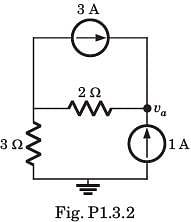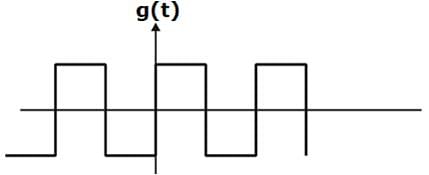Test: ESE Electrical - 7 - Electrical Engineering (EE) MCQ
30 Questions MCQ Test Engineering Services Examination (ESE) Mock Test Series 2024 - Test: ESE Electrical - 7
| 1 Crore+ students have signed up on EduRev. Have you? Download the App |
In the circuit of fig. a steady state has been established before switch closed. The i(t) for t > 0 is
A resistance of 7 ohm is connected in series with an inductance of 31.8mH. The circuit is connected to a 100V 50Hz sinusoidal supply. Calculate the current in the circuit.
Determine the complex power for hte given valuesin question.
Q = 2000 VAR, pf =09. (leading)
The three impedances Z1 = 20∠30⁰Ω, Z2 = 40∠60⁰Ω, Z3 = 10∠-90⁰Ω are delta-connected to a 400V, 3 – Ø system. Find the power in the R phase.
Find the Lorentz force of a charge 2.5C having an electric field of 5 units and magnetic field of 7.25 units with a velocity 1.5m/s.
The force on a conductor of length 12cm having current 8A and flux density 3.75 units at an angle of 300 is
A system with an input x(t) and output y(t) is described by the relation: y(t) = tx(t). This system is
What is the partial fraction expansion of X(z)=1/((1+z-1 )(1-z-1)2)?
What is the inverse z-transform of X(z)= 1/(1-1.5z-1+0.5z-2 ) if ROC is |z|<0.5?
Determine the time signal x(t) corresponding to given X (s) and choose correct option.

Determine the time signal x(t) corresponding to given X (s) and choose correct option.

The ratio of powers present in 3rd harmonic to 5th harmonic for a square periodic signal.
In the question, the FS coefficient of time-domain signal have been given. Determine the corresponding time domain signal and choose correct option.
X[k] As shown in fig. , ωo = 2π
The Nyquist sampling interval, for the signal sinc(700t) + sinc(500t) is:
If X(k) is the N/2 point DFT of the sequence x(n), then what is the value of X(k+N/2)?
What is the condition of M, if the structure according to the direct form is as follows?
By combining two pairs of poles to form a fourth order filter section, by what factor we have reduced the number of multiplications?
Loop which do not possess any common node are said to be ___________ loops.
For a control system, the Laplace transform of error signal e(t) is given by  . The steady state value of the error will be
. The steady state value of the error will be
For which of the following values of K, the feedback system shown in the below figure is stable?

The characteristic equation of a closed loop control system is given by:
s2 + 2s +10 + K(s2 + 6s + 10) = 0
The angle of asymptotes for the root loci for K ≥ 0 are given by
Consider the following statements related to frequency domain analysis:
- The cut-off rate is the slope of the log magnitude curve near the cut-off frequency.
- The bandwidth is defined as the band of frequencies lying between 3 dB points.
- Higher the value of resonant frequency of the system, slower is the time response.
- The magnitude of resonant peak gives the information about the relative stability of the system.
Which of these statements is/are not correct?





















































